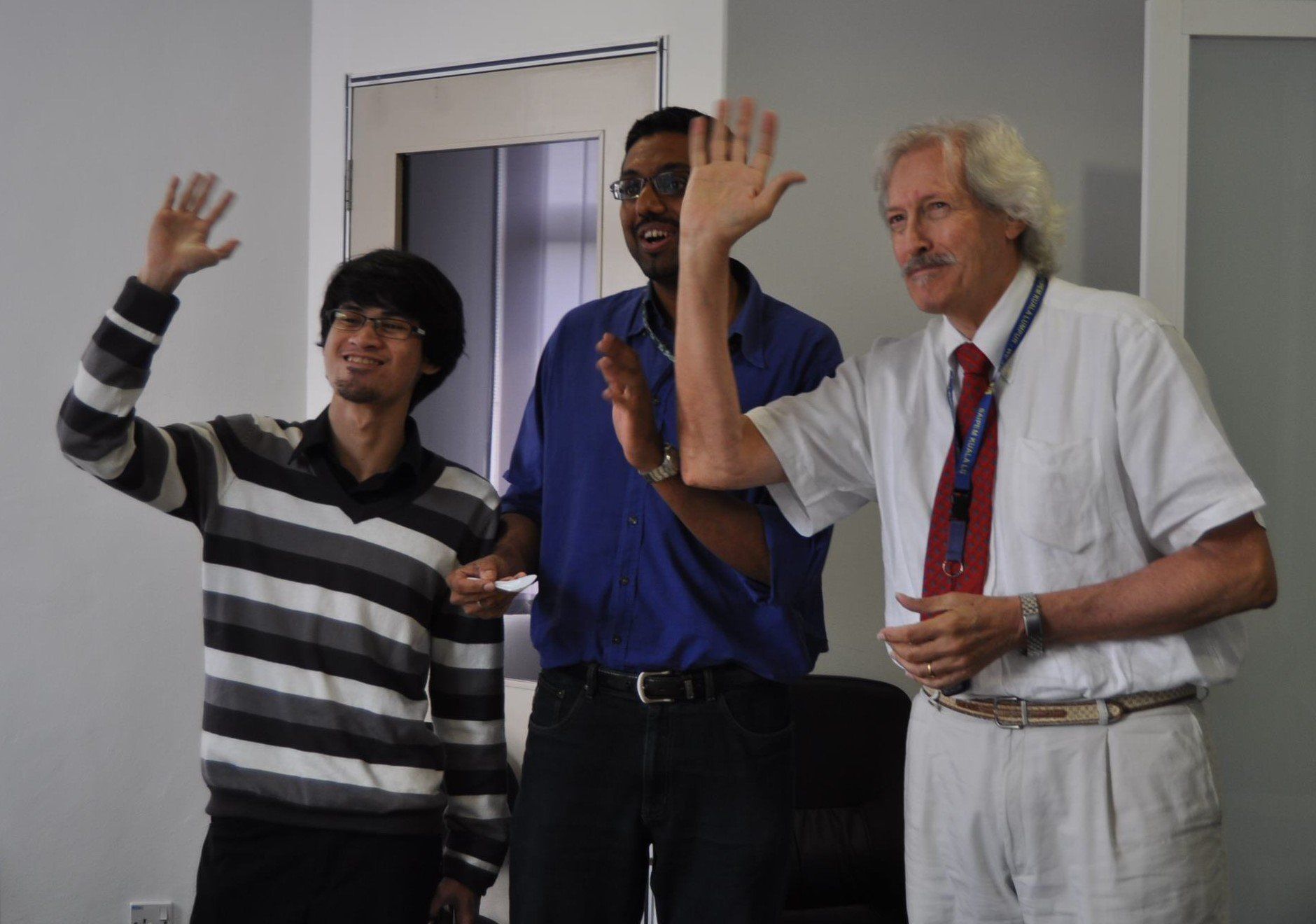Teamwork Lessons From Pixar, The British Red Cross And The Rolling Stones

How do you create a lasting team like the Rolling Stones?
Teamwork can sometimes be hit or miss – you’re either on fire or a complete washout. Actually, for most of us, it’s usually somewhere in the mediocre middle. But it doesn’t have to be this way; high-performing super teams do exist and you can learn great things from them.
In fact, I’ve discovered seven in all walks of life, including animation wizard Pixar, global aid agency the British Red Cross and sexagenarian rockers the Rolling Stones. What do they know that the rest of us don’t? And can we sprinkle some of their fairy dust onto our own less than super teams?
First things first: if you want a great team you need talented individuals. In the past decade, there has been perhaps no individual in business more celebrated than Apple’s Steve Jobs. But the brilliant Jobs also had a dark side when it came to working with colleagues.
In the early part of his career he was infamous for what became known as his management by character assassination. He routinely and regularly referred to people in his own company as “shitheads who suck”. He fell out with everyone, including his co-founder Steve Wozniak and his own appointee CEO John Scully.
His bad behaviour at Apple eventually led to him being stripped of all power and responsibility and forced to leave the company. He may have had the vision and an obsession with simple elegance, but his inability to work in a team meant that he found himself alone and on the outside, unable to realise his dream.
Jobs had to learn the importance of teamwork the hard way; something that was reinforced after he acquired the graphics division of Lucas film from George Lucas and created Pixar.
Pixar co-founder and head of animation John Lasseter’s short movie Luxo Jr inspired Jobs to refine Pixar’s vision. As he watched Luxo Jr, a story about the relationship between father and child standard lamps, a light went on, both on the screen and in his mind.
He admitted, albeit in private, that his vision for Pixar to be a software and hardware graphics company was wrong. He learned and adapted through the team, adopting their dream to make computer-animated feature films.
Yet, while Jobs understood that he could be inspired and influenced by the team, Pixar nearly stumbled when it tried to make a film by committee.
At a screening of the first half of the original Toy Story, it became obvious to both the Pixar team and the Disney studio producing the film that the movie had lost its way – the storyline had become unfocused and the characters were no longer convincing.
Disney wanted to shut down the production, but Lasseter managed to negotiate a fortnight’s extension. Storywriter Joe Ranft said: “It was do or die time: the Grim Reaper was in the room.”
All the Pixar team’s work was in jeopardy. They launched themselves into a fortnight of hyper-intense activity, of physical and mental stress, dealing with the issues with brutal honesty. The threat powered them onwards.
In that brief, two-week reprieve, they reshaped the opening third of the movie, trusting their instincts, trusting each other to be constructively critical. It worked. Disney was impressed and the Pixar creatives, emerging as a superteam, applied much of what they had been through and learnt to their daily way of working from that point on.
Importantly, the Toy Story crisis forced the team to be more self-confident as individuals but also less ego-driven for the team. The team members put their own best ideas forward, without being fearful of what others might say or think. Equally, they were prepared to criticise and voice their concerns, trusting in each other to take notes positively, focused solely on improving the film – literally looking at the bigger picture.
 The Toy Story crisis forced the Pixar team to be more self-confident as individuals but also less ego-driven for the whole team
The Toy Story crisis forced the Pixar team to be more self-confident as individuals but also less ego-driven for the whole teamA clear and compelling common purpose is essential to attracting the right talent and getting them to want to do great work and to do it together as a team. When the British Red Cross ramped up into immediate action in response to the devastating Haiti earthquake of January 2010, the team ranged from frontline disaster specialists on the ground in Haiti to volunteers in charity shops across the high streets of the UK.
Thousands of workers, volunteers and supporters were mobilised into a community of purpose. The British Red Cross ensured there was a clear line of sight between the many individual actions and the movement’s overall goals. The volunteers in the shops were totally committed: they could see their work selling second-hand clothes in terms of relieving suffering and saving lives.
For most teams, there will be less of a visceral crisis to respond to, but there should still be a sense of meaning in their work. For a team’s purpose to be potent it needs to be compelling to its members. You need to inspire your team with a vivid picture of a better future, and help them see that inaction will be worse.
Your aim is to connect the team’s work to an exciting, meaningful outcome, a result that everyone finds personally worthwhile. Often, that means looking beyond day-to-day tasks towards the ultimate benefit of their work and whom it helps.
But, if you want excellence to become a habit, you need to define a shared approach to working together and practise it over and over until it becomes second nature. Even though the Rolling Stones (Mick Jagger, Keith Richards, Charlie Watts and Ronnie Wood) have played to more people in more places than any other band, they still recognise the importance of practising together.
They typically commit two months to rehearsing before every tour and relish the opportunity to reconnect with their collective rhythm. The practice enables the band to perform with almost telepathic communication.
Richards states that he knows exactly what’s happening simply by watching Watts’ left hand. If the tempo ever drags, one glance from Richards to Wood speaks volumes. Together they will then step up the pace. The band performs as a seamless unit, each individual listening and responding to the others in what Wood calls “a conversation through music”.
In the most ephemeral of industries the Stones have achieved their purpose of being the world’s greatest rock’n’roll band. They provide a great example of cohesion and performing at the highest levels for 50 years and counting, still writing new material and once again back on stage.
The Stones’ success comes from each member having distinctive but complementary roles. Richards is their spiritual leader, Wood the mediator, Watts the band’s backbone, while Jagger is in control of everything he can be, a chief executive in many ways, the rock to Richards’ roll.
Of course, each of the Stones is a talent in his own right, but it is the multiplying effect the band has on each of them that works best, as the comparative lack of commercial success of their solo music projects has proved. Being part of the Rolling Stones remains the best way for each member to achieve his individual goals.
The magic is in the mix. Individual excellence within a team remains vital, but it is the chemistry of combining those talents that delivers a superteam. The best team members are those who combine individual drive with the wisdom to understand the importance and power of the team.
The ingredients of the Stones’ creativity, and in particular the dynamics between Richards and Jagger, could also drive the band apart. Over the years this conflict has pushed the team close to breaking point.
The challenge of several artists all trying to paint on the same canvas at the same time can force teams to fragment, sometimes explosively. As Wood wryly notes: “You know when Richards disagrees. He normally pulls a knife on you.”
Teams need healthy abrasion and competition to fan the sparks of creativity without burning down the entire edifice. Rather than trying to avoid conflict and dulling their creative edge, the Stones make the most of diversity without letting it divide them. They have discovered ways of building cohesion, the magnetic force that binds teams together, and harmonising diverse skills without averaging them.
In the early days, the band was inseparable. They shared a flat, the back of their van with their kit, and even the occasional girlfriend. The stronger the shared experience – and their early writing and tours are the stuff of rock’n’roll legend – the stronger the bond. Teams develop cohesion by spending real time and having shared experiences together.
These days, the Stones’ cohesion and staying power are equally based on the time they now spend apart. The team forms only when it has to.
When they are not writing and touring, they tend to lead separate lives, retreating to their French chateaux or Caribbean hideaways and indulging their own outside pursuits. Wood paints and presents his radio show, Jagger has a film production company, Watts plays jazz with his own big band.
These gaps allow for a sense of occasion to build and audience demand to swell. The space helps keep the group together. When they reconvene they compare to it a war veterans’ reunion, battle-scarred but re-energised by the prospect of going out and making music together again. “The Rolling Stones is a vehicle that only works when we put it in motion,” says Wood.
No team is the same, but every team succeeds when it masters the tasks of team-building and teamwork. Every team needs a clear purpose to inspire and commit great individuals to a common cause.
Teams need to invest in building cohesion and mastering conflict to get the benefit of creative abrasion while keeping the team together. As a team, you need to define your own protocols for the most vital areas of collaboration and practise them together until they become second nature, a high-performance habit.
And this is the real secret that can help all teams become superteams: the essence of teamwork is hard work. There is no substitute for the ongoing commitment and measured practice required to build better teams.
Khoi Tu is a leadership and teamwork consultant who helps organisations build better teams. His book Superteams: The Secrets Of Stellar Performance From Seven Legendary Teams, is an Amazon.com best seller and is published by Penguin. This article was originally published in the UK edition of Management Today. Click here for more articles.
Leadership
This article is published by the editors of Leaderonomics.com with the consent of the guest author.





